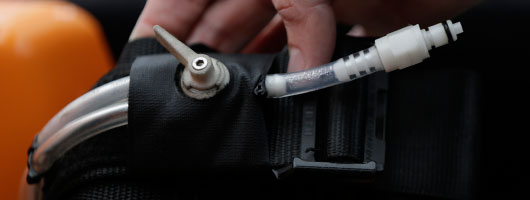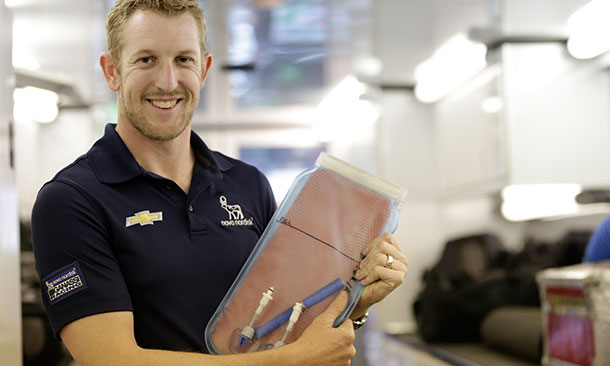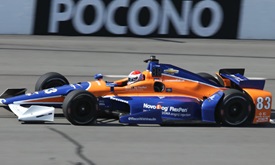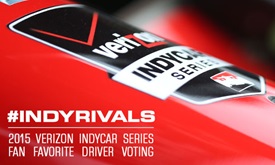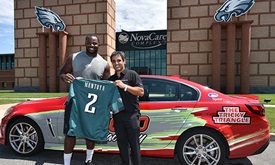Kimball connected to car in monitoring diabetes
AUG 22, 2015
LONG POND, Pa. – Like other Verizon IndyCar Series drivers, Charlie Kimball is figuratively and literally connected to his race car. Also like other drivers, Kimball has a drink system mounted in the car. His has a twist.
Because of his type 1 diabetes, Kimball has two reservoirs at his disposal -- one filled with water and the other with orange juice, which contains carbohydrates if Kimball determines his blood sugar level needs a quick boost. Both options are attached to a valve, which is clipped to his seat harness.
His father, Gordon, a renowned motorsports engineer, designed the valve, and it was 3D printed from Nylon 12 PA in Charlotte, N.C.
“We were looking for a small production run and wanted it to be lightweight, but we couldn’t find anything commercially available that would work,” Kimball said. “My father was interested in doing the design and learning more about the 3D printing options.
“Traditionally, he always has to consider how to machine a part – wheel nuts, tripods, drive shafts – you have to consider how it actually gets made, where with a 3D printer you just draw exactly what you want and it prints it. So he was able to say, ‘I want it to look like this, the valve swing to be this much,’ all that stuff.”
In the previous three seasons of the Dallara IL-12, drink containers were mounted in the cockpit next to Kimball’s thigh. Now the container is inserted into a sidepod, which makes it simple to resupply before each on-track session.
“The impetus for the change this year was the safety advancements of adding a foam crushable structure there,” Kimball said. “We didn’t want to route the tubes through the foam and reduce the safety aspect. By bringing the two tubes as close to my helmet as possible, it shortens the amount of fluid I have to drink if I switch and shortened the tube length from the insulated bag so there’s less fluid that’s prone to temperature and I get more volume.
“You have a three-layer fireproof suit on and wrestling 650 horsepower with no power steering you tend to lose some weight and water, so you try to stay hydrated as much as possible.”
Preparation, whether he’s on the racetrack or participating in a full day of activities for sponsor Novo Nordisk, and monitoring his blood glucose level has been part of daily life since being diagnosed with type 1 diabetes in October 2007.
“It’s something I deal with every day,” Kimball said. “If I saw my lap times changing, I’d tell the team to check the tire pressure. If I see my blood glucose levels drop, I just drink some OJ.”
Kimball also employs a continuous blood glucose monitor that displays real-time information in the cockpit and the No. 83 car’s pit stand.
“It’s a wire that is injected into the interstitial fluid and the receiver plugs into a box in the car data system that translates it to put it on my steering wheel,” he said. “The electronics system is tied into everything the car does -- from the engine diagnostics, to tire pressures, brake temperatures, engine fuel levels, everything. So on my steering wheel, on my electronic dash, I have everything from lap time, to speed, oil pressure, blood sugar, water temperate, gear.
“The car and body data are right there together.”
